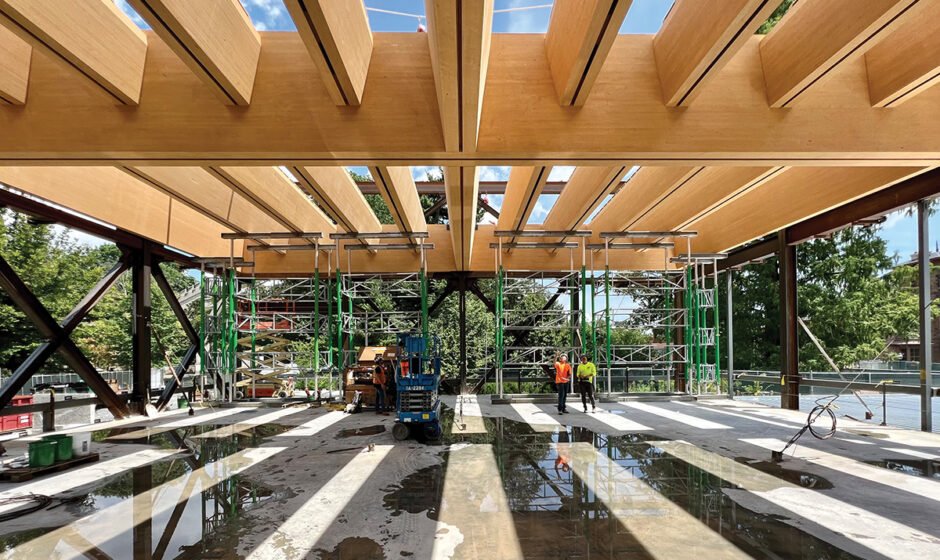The University of Princeton is undergoing a major campus expansion, with 16 construction projects currently underway. These projects are expected to be completed by 2029 and are driven by the institution’s mission to increase access for undergraduate students, enhance research and scholarship, and achieve campus sustainability goals.
One notable aspect of the current construction projects is the use of mass timber, a building technology that involves laminating, gluing, nailing, or doweling layers of wood together. While mass timber has been around since the 1990s, it has gained prominence recently due to its reputation as a more sustainable building material.
University Architect Ron McCoy *80 stated that approximately 800 buildings in North America use mass timber, and Princeton’s six mass timber projects will add to that number. These projects include the Environmental Studies and School of Engineering and Applied Science complex and Hobson College. While most of the projects fully utilize mass timber, the art museum has a mass timber structure in the ceiling, and the Frist Health Center incorporates a hybrid structure of steel and mass timber.
The decision to use mass timber aligns with Princeton’s sustainability efforts, as the University aims to become carbon neutral by 2046. McCoy emphasized the importance of reducing embodied carbon, which refers to the energy required to extract materials, manufacture building materials, transport them, and assemble them on-site. Mass timber has low embodied carbon compared to materials like steel and concrete, making it a more sustainable choice.
However, the environmental benefits of mass timber are a topic of debate. Tim Searchinger, a senior research scholar at the School of Public and International Affairs’ Center for Policy Research on Energy and the Environment, believes that using mass timber in construction is a mistake. According to his research published in the journal Nature and the World Resources Institute, the assumption that wood is carbon neutral may not hold true. The use of wood in construction is likely to increase emissions for many decades, even when compared to concrete and steel.
Despite these concerns, the University’s Office of Sustainability plays a crucial role in evaluating material choices for each building project. The office’s interim director, Ijeoma Nwagwu, acknowledged the critiques of mass timber but stated that the decision to use it was supported by the Sustainability Advocacy Committee’s review. The University also works with suppliers who practice responsible wood harvesting, taking into account environmental impact and labor practices.
McCoy believes that the University’s commitment to sustainability will be evident to future generations through the incorporation of mass timber buildings and sustainable materials on campus. He sees this commitment as a significant milestone for Princeton’s dedication to sustainability.
In conclusion, Princeton University’s campus expansion includes the use of mass timber in several construction projects. While mass timber is considered a more sustainable building material, there are debates about its environmental impact. Nevertheless, the University is committed to evaluating material choices and working with responsible suppliers to ensure sustainability.




